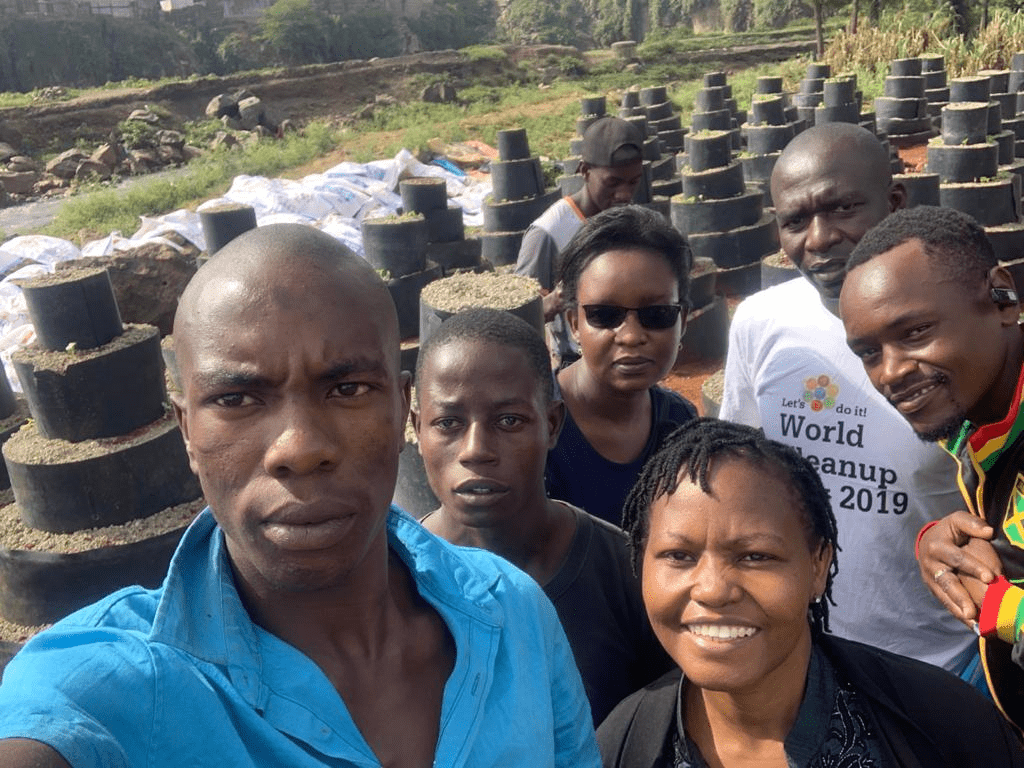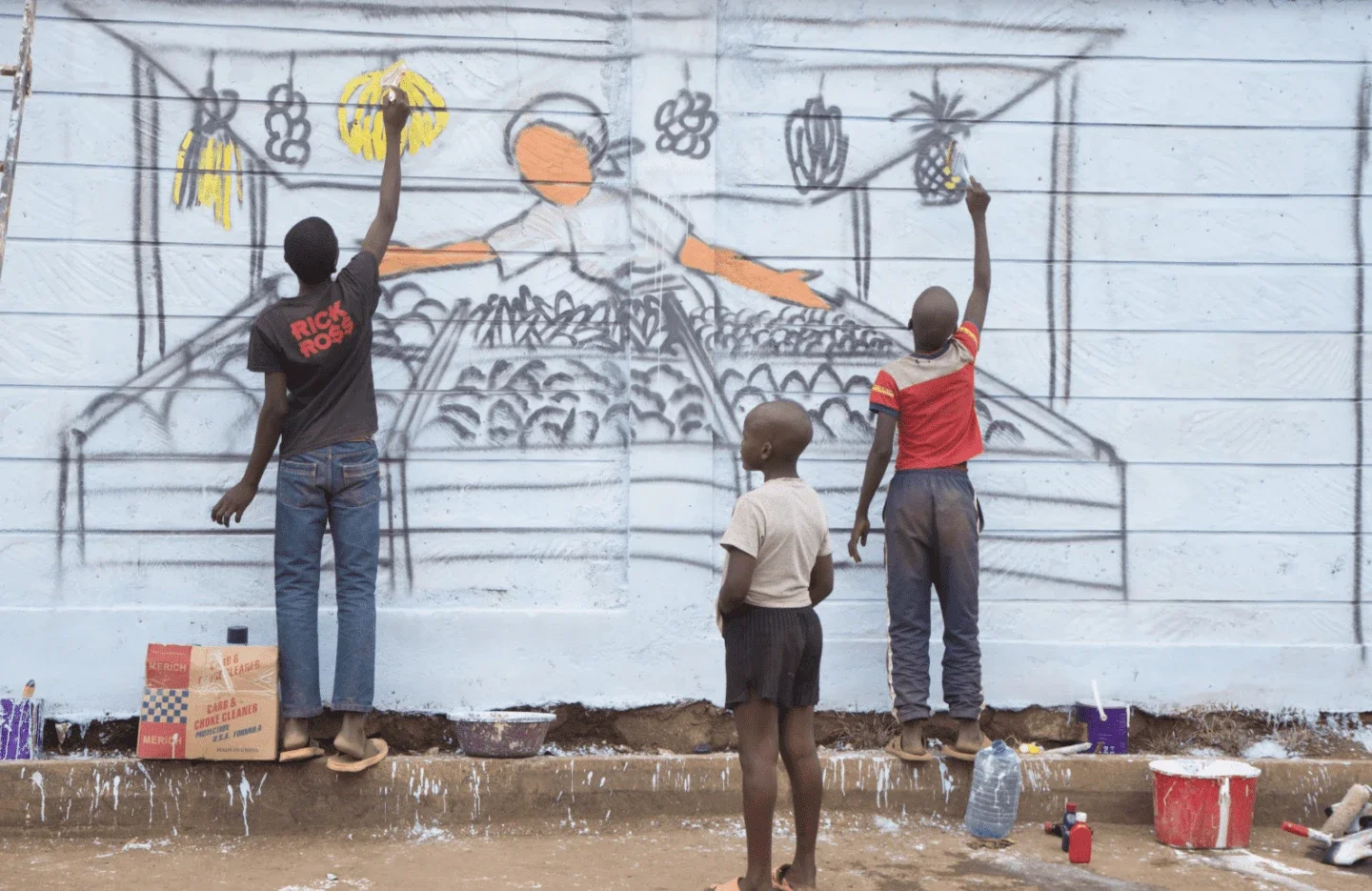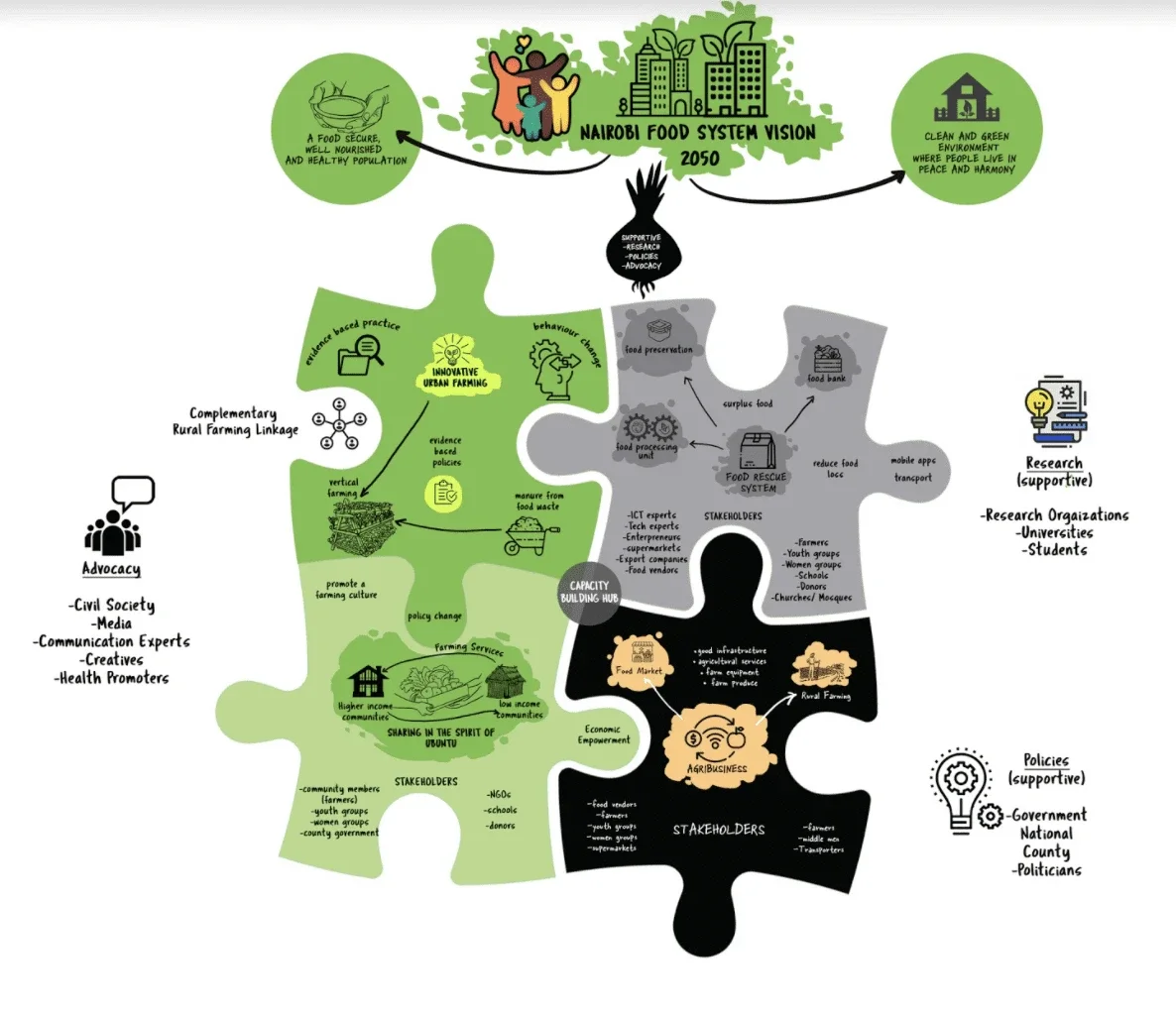This Vision outlines a transformation for Nairobi, Kenya from a food insecure megacity with high levels of inequality, to the place of “cool waters” through a regenerative and human-centered food system.
Nairobi, the capital of Kenya, prides itself on its arboretum and its variety of parks and open green spaces. Directly translated from Maasai language Say Maa, the language of the Indigenous Massai people, Nairobi means “cool waters” in reference to the cold stream flowing through it. Yet due to a host of challenges – including pollution and deforestation – the paradisiacal reference to Nairobi seems long forgotten.
Nairobi today is deeply divided between the “haves” and the “have nots,” with 60% of the 4.7 million residents in Nairobi living in informal settlements, or slums. There are high levels of poverty, food insecurity and malnutrition; inadequate water supply and sanitation; widespread environmental pollution; and a lack of income-earning opportunities. Some residents have resorted to crime, child labor, and scavenging from dumpsites to make ends meet.
The socioeconomic divide plays out prominently in diet and nutritional status, with 70% of households in lower income communities consuming fruits at levels below the WHO/FAO recommendations (of at least five servings of fruits and vegetables per day), versus 33% of higher income households. Yet, due to inefficient food storage, preservation, processing, and distribution, there is significant food waste at industrial, household, and market levels.
The Vision showcases how by the year 2050:
- There is an efficient food system that promotes agroecological urban farming (a set of small, diverse, integrated farms that use low levels of inputs to maintain balance between food production and the sustainability of natural resources).
- Youth and women groups are empowered to establish and maintain organic farms on idle land and digital technologies link farmers with food distributors and vendors.
- Agroecological local food production in Nairobi promotes food availability and access while regenerating the environment and preserving human, social and cultural values.
- A food rescue, repurposing, and redistribution system is in place, reducing food loss and promoting access for vulnerable groups, while simultaneously protecting the environment.
- The food system is people-centered, resulting in a healthy population that is food secure, well-nourished, and living in a green, clean, and healthy environment, in peace and harmony in the spirit of Ubuntu (I Am Because We Are).
The Vision is led by the African Population and Health Research Center (APHRC). With over 20 years of advocating for the urban poor in Nairobi, the team behind APHRC has a special connection with the city and is inspired to advance the Vision.

Working with diverse partners, APHRC seeks to make vital contributions to food systems transformation by improving diets; enhancing environmental sustainability; promoting economic security; and preserving human, social and cultural values.
Click here to explore the full Vision for Nairobi, Kenya in the year 2050.
Our Vision is that Nairobi will be a place of cool waters, where people are well-nourished and healthy, and live in harmony and peace – in the spirit of Ubuntu – through a regenerative, transformative and human-centered food system.

